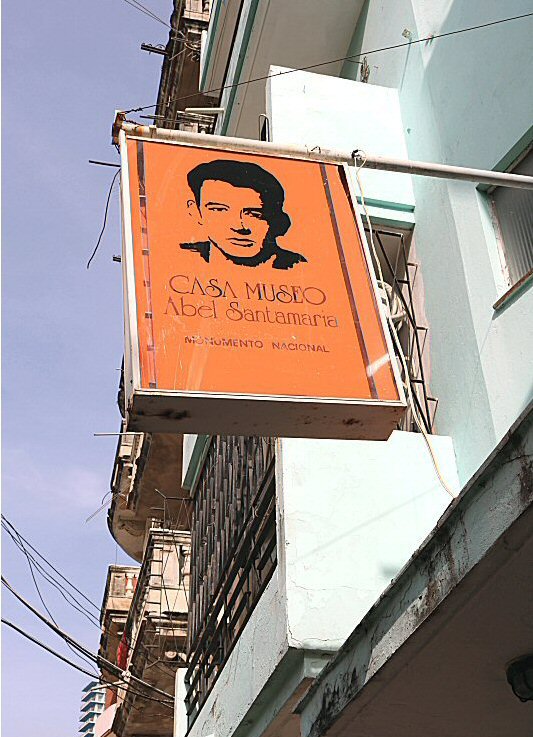

 From
the viewpoint of the revolution, the Casa Museo Abel
Santamaría has a special importance, as the assault on the
Moncada Barracks in Santiago de Cuba in 1953, was planned in
this house by Abel Santamaría (1927-1953), his sister Haydée
Santamaría, Fidel Castro and the other main leaders of the
organization, such as Renato Guitart, Jorge Luís Tassende,
Pedro Miret, Mario Muñoz, Boris Luís Santa Coloma, among
others. The armed assault that occurred on July 26, is
widely accepted as the beginning of the revolutionary fight
against the bloody regime of Fulgencio Batista. Following
the unsuccessful attack, Abel and his sister Haydée were
captured by Batista’s forces. Abel Santamaría’s eyes were
gouged out, while his sister Haydée was forced to watch the
torture, and Abel’s corpse was passed off, as if he was
killed during the attack that occurred two days before.
Within a few days, the members of Batista’s intelligence
service flocked the house, looking for any evidence to blame
more people, but they couldn’t find anything.
From
the viewpoint of the revolution, the Casa Museo Abel
Santamaría has a special importance, as the assault on the
Moncada Barracks in Santiago de Cuba in 1953, was planned in
this house by Abel Santamaría (1927-1953), his sister Haydée
Santamaría, Fidel Castro and the other main leaders of the
organization, such as Renato Guitart, Jorge Luís Tassende,
Pedro Miret, Mario Muñoz, Boris Luís Santa Coloma, among
others. The armed assault that occurred on July 26, is
widely accepted as the beginning of the revolutionary fight
against the bloody regime of Fulgencio Batista. Following
the unsuccessful attack, Abel and his sister Haydée were
captured by Batista’s forces. Abel Santamaría’s eyes were
gouged out, while his sister Haydée was forced to watch the
torture, and Abel’s corpse was passed off, as if he was
killed during the attack that occurred two days before.
Within a few days, the members of Batista’s intelligence
service flocked the house, looking for any evidence to blame
more people, but they couldn’t find anything.
Abel Santamaría and his sister
Haydée moved to this flat in 1952, 14 months before the
assault on the Moncado Barracks. Even though the calendar at
the wall inside is frozen on 25 July 1953, Abel left the
house on July 7, as Fidel Castro sent him to Santiago de
Cuba to finalize the details in the Siboney Farm, and the
house was locked by Fidel Castro at night on July 24. The
building was purposely selected, as it was a silent and
secure place with two access doors, one on the 25. street
and the other one on the street O.
In August, Abel’s mother
Joaquina Cuadrado and her sister Aida removed
the belongings of Abel and Haydee from the
house, so that the house was rent to another
person. In 1959,when Haydée Santamaría, by then
the director of the Casa de la Américas, was
giving details about the life that she had spent
in that house with her brother Abel, the idea
emerged to establish a museum in that house in
the memoriam of Abel Santamaría, a person whose
life was terminated so tyrannously. In 1973, the
house was inaugurated as an institution
affiliated with the National Culture Council,
later the Ministry of Culture. In 1980, the site
was declared National Monument.
The Casa Museo Abel
Santamaría is one of the smallest house museums
in Havana, occupying a flat of a modest
apartment. It deems unlikely that the simply
decorated flat had big contribution in the
change of the course of the history, giving
shape to the future of a country. In tribute to
Abel Santamaría, the original furniture in the
apartment flat has been preserved, as it was
left on the final days of his stay. The corridor
on the sixth floor is decorated with panels
depicting some photos, related with Abel
Santamaría. Before entering the house museum,
you should first visit the guide office that is
adjacent to the Casa Museo Abel Santamaría, as
the door of the house museum is often locked.
You can also watch the pencil drawings of Che
Guevara on the wall of the office (but why only
Che!?)
The flat consists of two
rooms, the kitchen and the quite small bathroom.
One of the rooms served as the living-dining
room, whereas the other as the bedroom. On
the walls of the living-dining room, there are
some photos of Abel and Haydée from their
childhood and later with their family. In the
center of the room there is the desk on which
the metal statuette of José Martí stands. The
bust of José Martí on the glass door bookcase
and the almanac of the year 1953 at the wall
that was printed for the centenary of the birth
of José Martí, give hints about the origin of
the thoughts of Abel Santamaría and his sister
Haydée. A publishing of the Partido Ortodoxo
(Orthodox Party) on economic independence,
political freedom and social justice, a fan that
belonged to Haydée and an allegorical tie that
belonged to a member of Patriot Club in exile
are the other pieces exhibited in the room. On
the wall of the bedroom you will read that the
room was used by Haydée for resting, and also by
Fidel Castro, even seldom. A photo of Haydée
together with Fidel Castro on the occasion of
the tenth anniversary of the assault on Moncada
Barracks is hung on the wall.